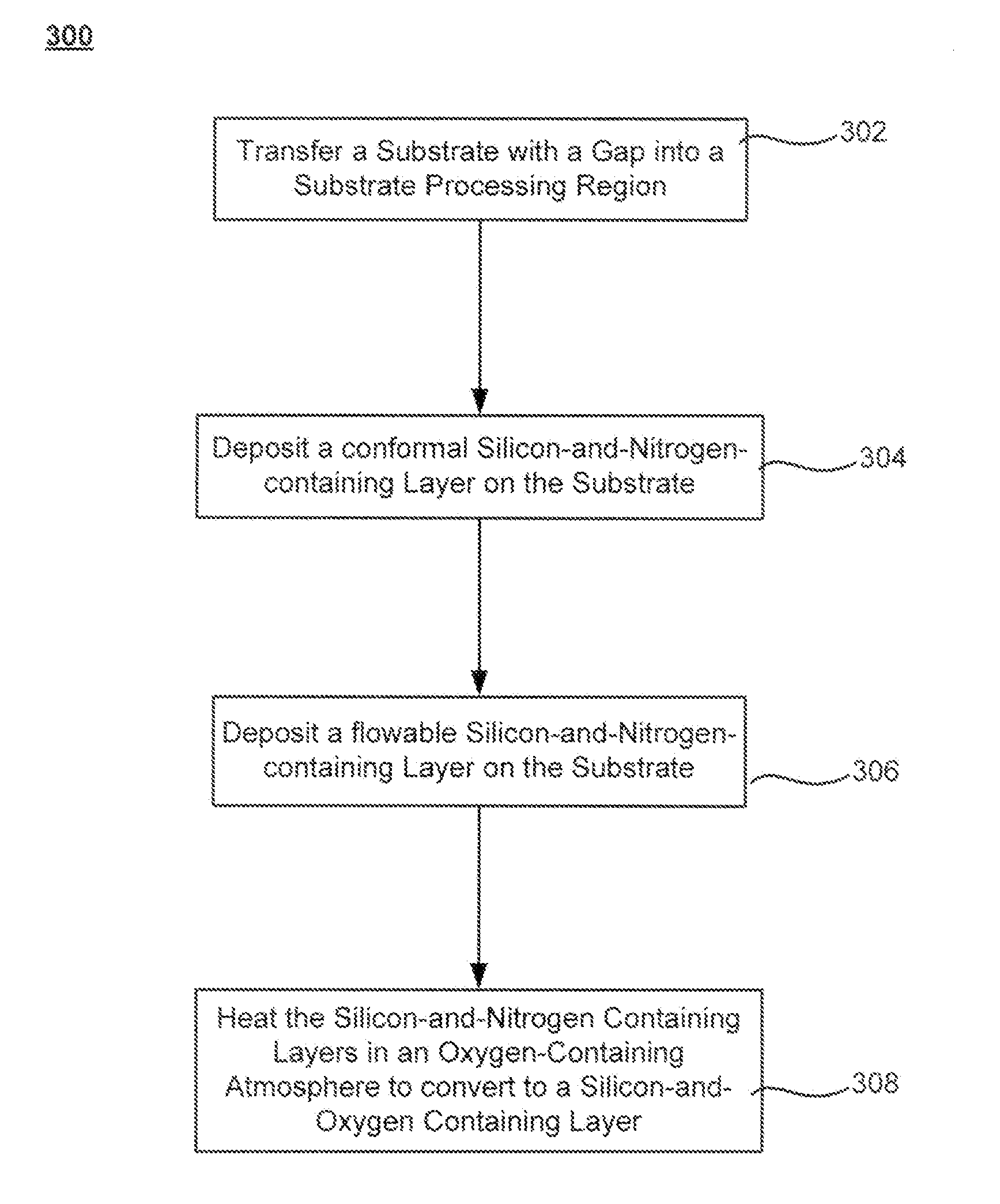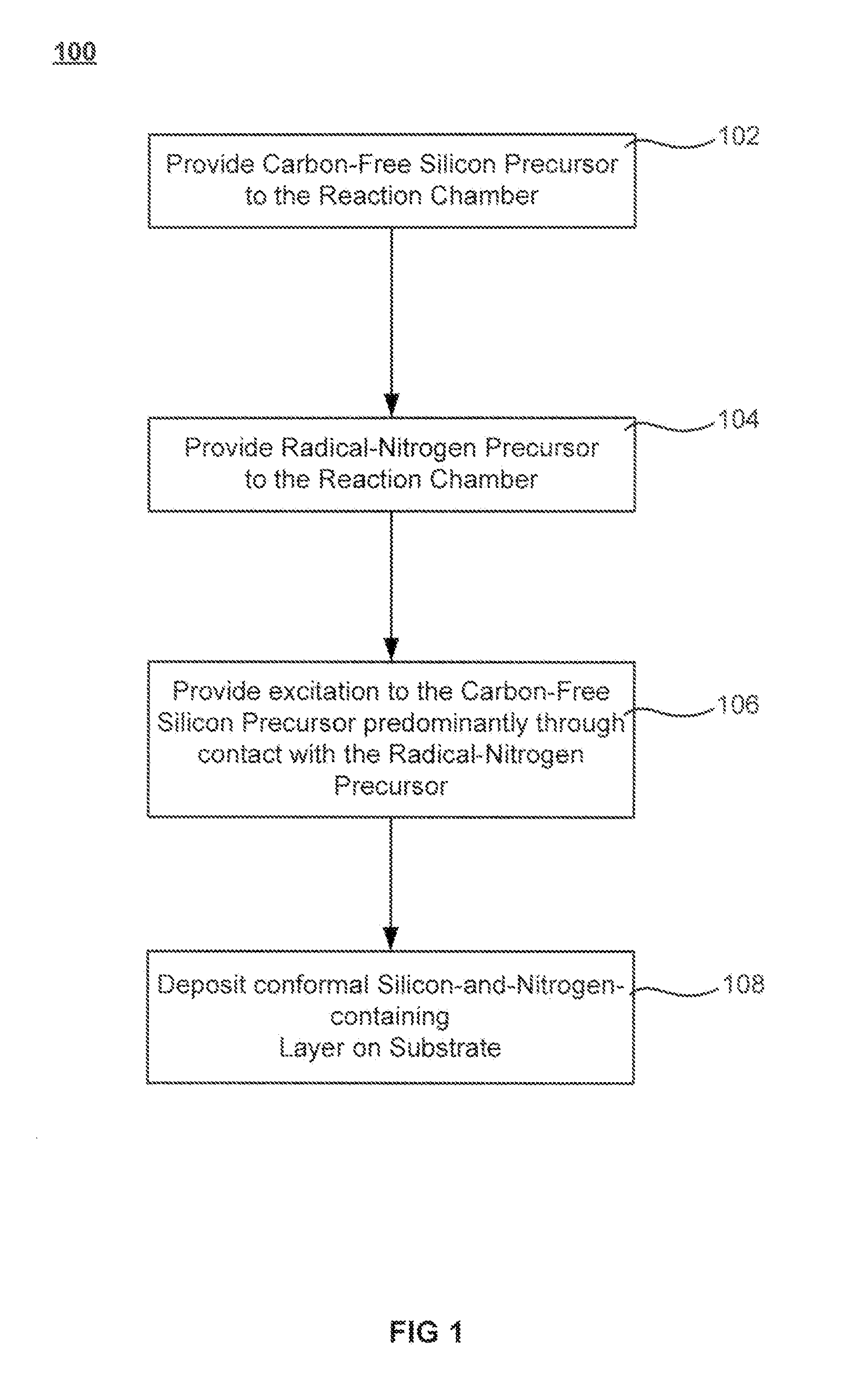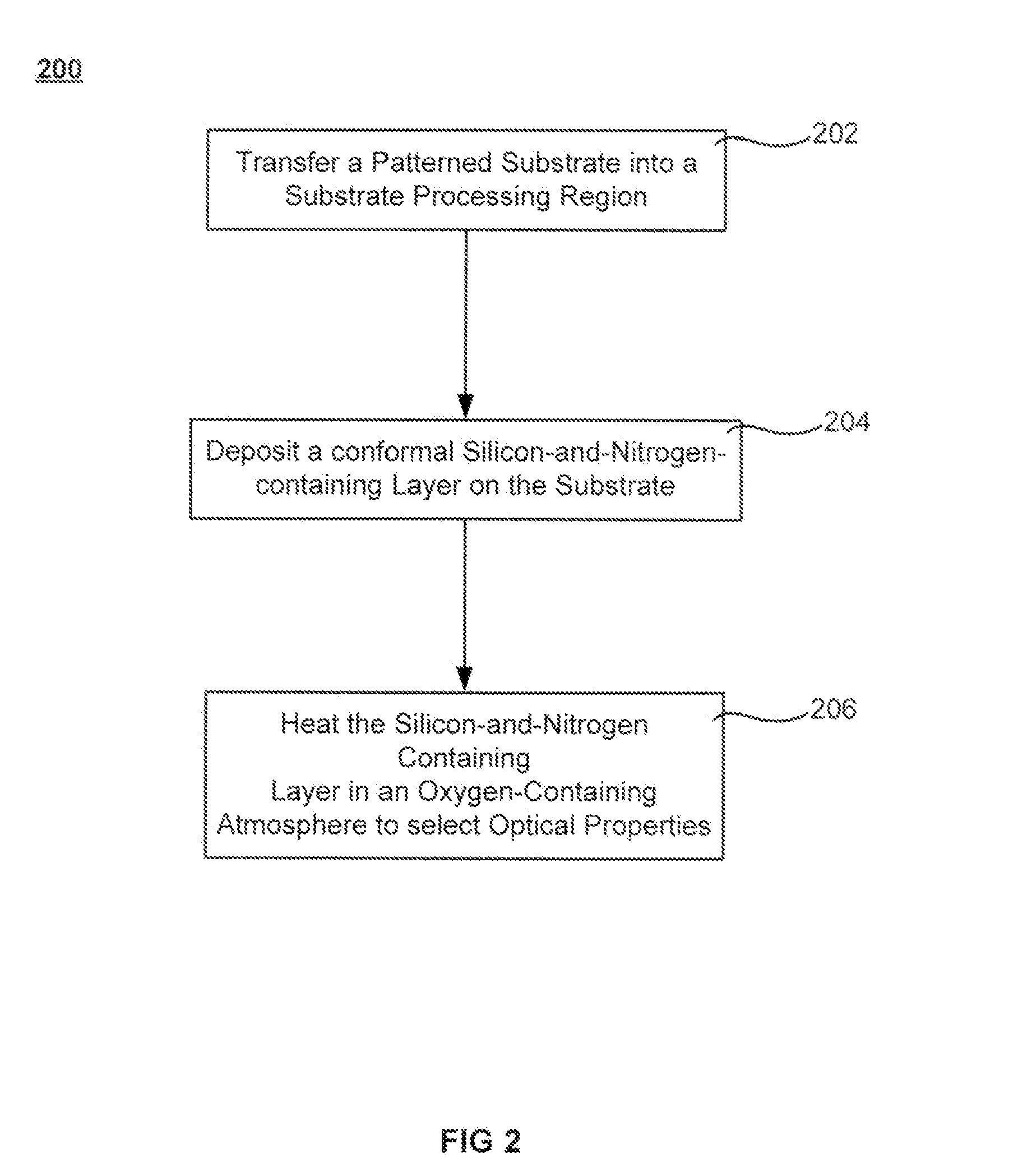Conformal layers by radical-component CVD
a radical component and radical technology, applied in the field of radical component cvd conformal layer, can solve the problems of dielectric material, dielectric material, structural features of the device having decreased spatial dimensions, etc., and achieve the effects of less volume shrinkage, less pore formation, and improved wetting properties
- Summary
- Abstract
- Description
- Claims
- Application Information
AI Technical Summary
Benefits of technology
Problems solved by technology
Method used
Image
Examples
Embodiment Construction
[0016]Methods, materials, and systems are described for forming conformal dielectric layers containing silicon and nitrogen (e.g., a silicon-nitrogen-hydrogen (Si—N—H) film) from a carbon-free silicon-and-nitrogen precursor and radical-nitrogen precursor. The carbon-free silicon-and-nitrogen precursor is predominantly excited by contact with the radical-nitrogen precursor. Because the silicon-and-nitrogen film is formed without carbon, the conversion of the film into hardened silicon oxide is done with less pore formation and less volume shrinkage. The deposited silicon-and-nitrogen-containing film may be wholly or partially converted to silicon oxide which allows the optical properties of the conformal dielectric layer to be selectable. The deposition of a thin silicon-and-nitrogen-containing film may be performed at low temperature to form a liner layer in a substrate trench. In embodiments, low temperature liner layers have been found to improve the wetting properties and allow f...
PUM
| Property | Measurement | Unit |
|---|---|---|
| pressure | aaaaa | aaaaa |
| temperature | aaaaa | aaaaa |
| thickness | aaaaa | aaaaa |
Abstract
Description
Claims
Application Information
 Login to View More
Login to View More - R&D
- Intellectual Property
- Life Sciences
- Materials
- Tech Scout
- Unparalleled Data Quality
- Higher Quality Content
- 60% Fewer Hallucinations
Browse by: Latest US Patents, China's latest patents, Technical Efficacy Thesaurus, Application Domain, Technology Topic, Popular Technical Reports.
© 2025 PatSnap. All rights reserved.Legal|Privacy policy|Modern Slavery Act Transparency Statement|Sitemap|About US| Contact US: help@patsnap.com



